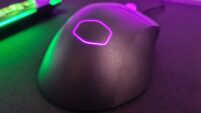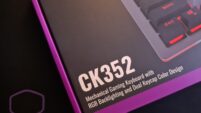
Console streaming can be expensive. Between the console, headset, streaming computer, cables, and a capture card, you could be heavily investing in something that might not see a return on investment for a while. As a content creator and reviewer, I look for deals that would be the perfect solution to get you started with great quality, that won’t break the bank.
Welcome to the stage, the MiraBox Capture Card.
First Impressions
At first glance, the MiraBox Capture Card looks like another cheap, mass-produced capture card that found its way onto the market during the pandemic to fill the need for game streaming, but its looks and feels much more than that. With it’s all aluminum body, LED indicators for HDMI and USB input, and clear labeling, the MiraBox Capture Card feels sturdy and looks great at the same time.
Included in the box was the Mirabox Capture Card, a USB 3.0 Type A cable, and an instruction manual to help with the setup of the device.
Installation and Setup
Like with most capture cards, you will need a broadcast program to capture the image from the capture card. A program I would recommend is Open Broadcast Software, or OBS for short. There are several other programs to choose from like Streamlabs OBS, Twitch Studio, and more. I did a comparison review of several programs which would work great with this capture card.
As far as setting up the device, you need to plug the device you are wanting to capture like a PS4, PS5, Xbox One, or Xbox Series into the HDMI input port on the capture card. Run a cable out of the HDMI output on the capture card to the TV or Monitor you plan to use as you play your game. Lastly, connect the USB 3.0 cable provided from the capture card to a USB 3.0 port on your streaming computer.
In OBS, add a Video Capture Device source and give the source a name. In the device drop down menu in the properties window, choose MiraBox Capture Card. From here, you can customize the settings to suit your needs like audio output, resolution, frame rate, and more.
Capture Quality
Overall, the color depth and sharpness of the capture card coupled with relatively low latency makes this budget capture card something of amazement. When I compare it to more expensive capture cards that I own when just considering picture quality, the difference is negligible at best. For a fraction of the cost compared to an Elgato HD60 S at over $100 more than the MiraBox Capture Card, it is a no brainer which capture card a console streamer should choose just starting out.
Shortcomings
Compared to other capture cards on the market, this still falls in line with a budget card that doesn’t offer software to support the device like Avermedia, Elgato, and Blackmagic provide for their capture cards. Because of this, you are reliant on a program like OBS to be able to utilize the device. Some might see this as a disadvantage, and in some cases it is. Elgato capture cards have software that includes flashback recordings to make sure you don’t miss the perfect shot, but you’d need to set this up ahead of time to take advantage of it. What you need to ask yourself here is if that functionality is worth an extra $100 and losing 4k passthrough. My opinion? the MiraBox Capture Card is a no-brainer here.
Final Thoughts
The MiraBox Capture Card was something I purchased out of curiosity for a project and it has now become the permanent capture card in my setup. Is it the best card on the market? No. But $40 is a great price for a card that offers the functionality that it does. Make sure you check out my video review to see quality comparisons as well as consider picking it up if you are in the market for a budget capture card.

![[Review] Logitech G502 Lightspeed: Any Good for Gaming? 20210322 170539](/wp-content/uploads/2021/03/20210322_170539-201x113.jpg)



